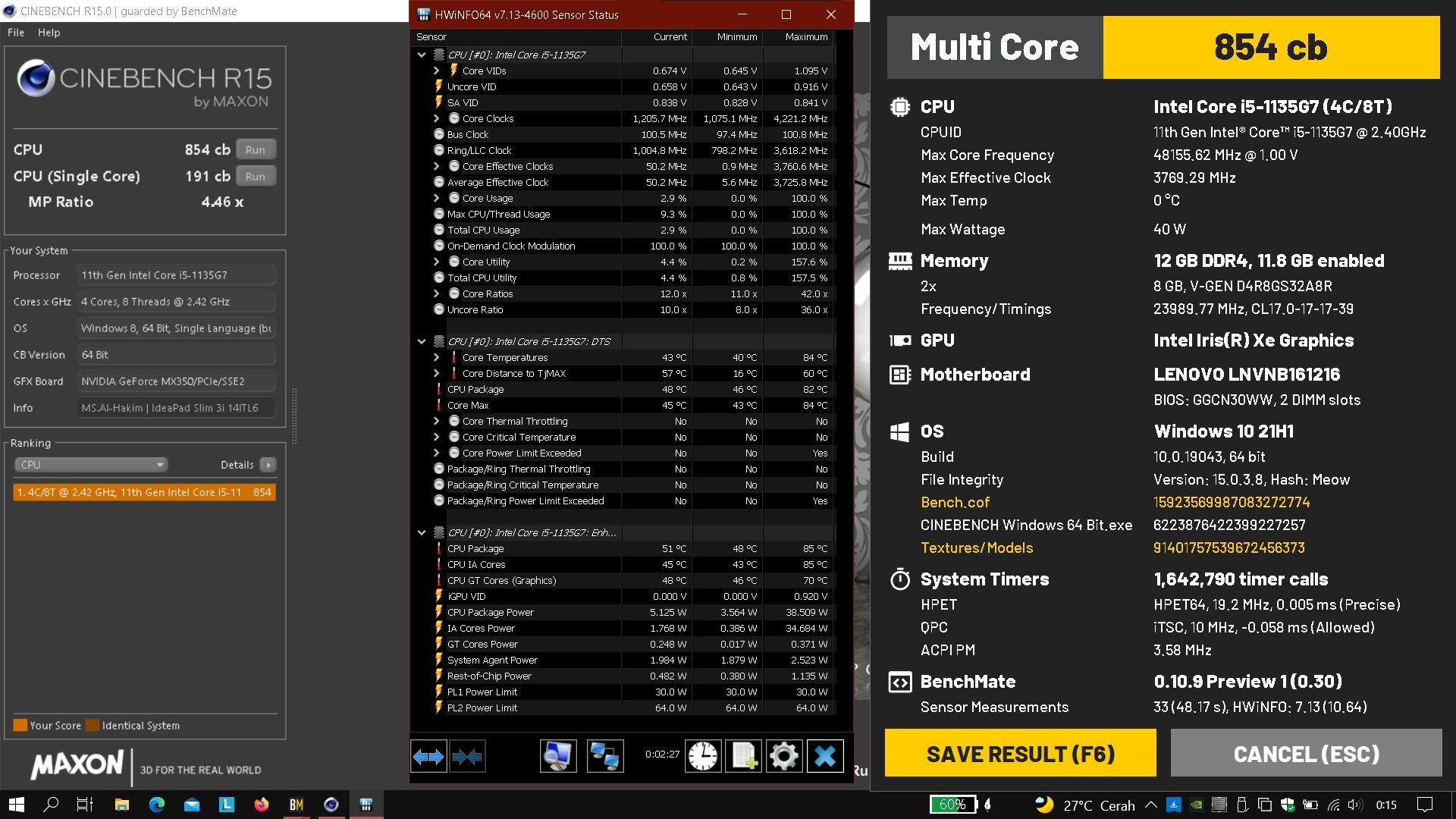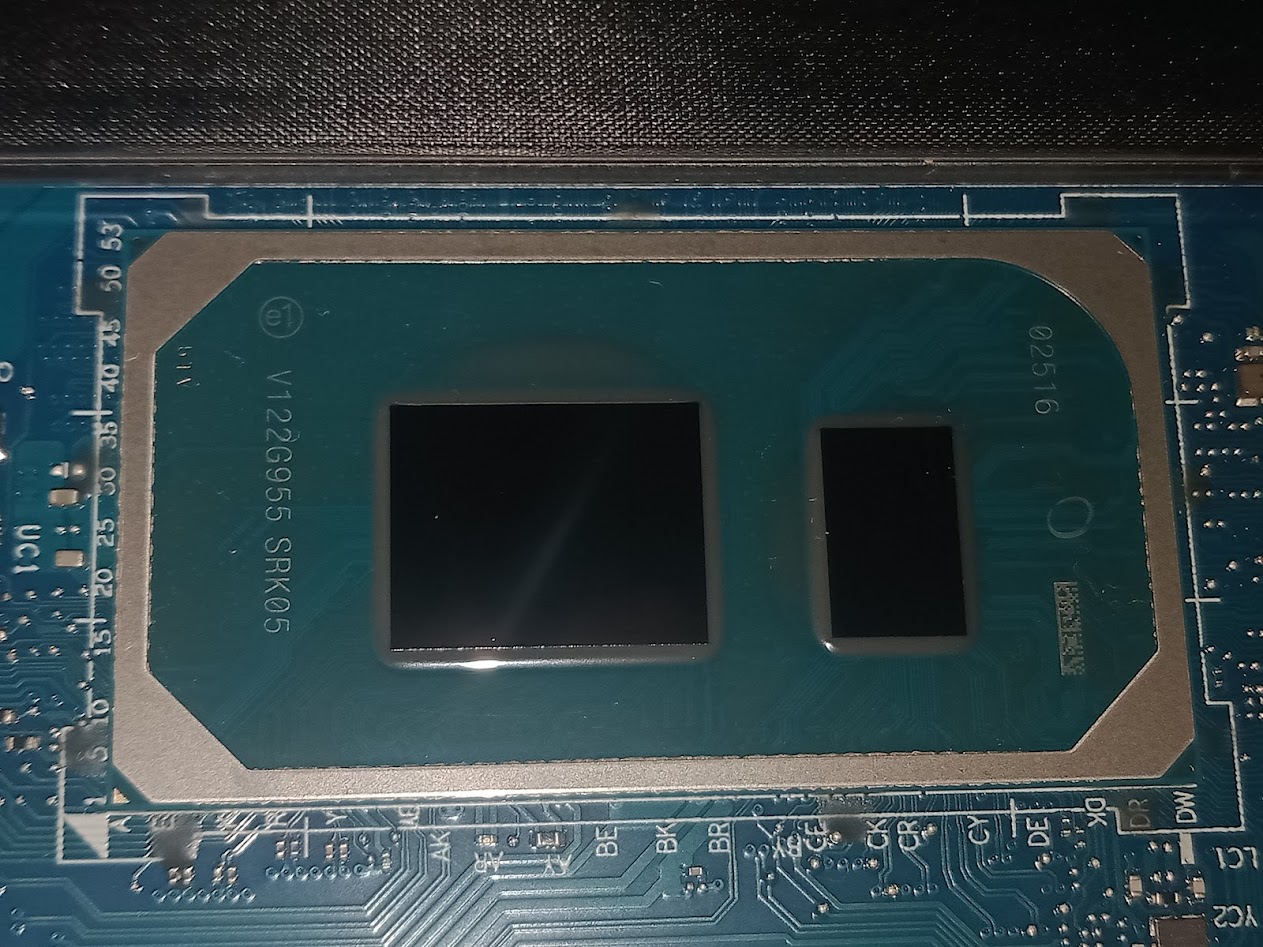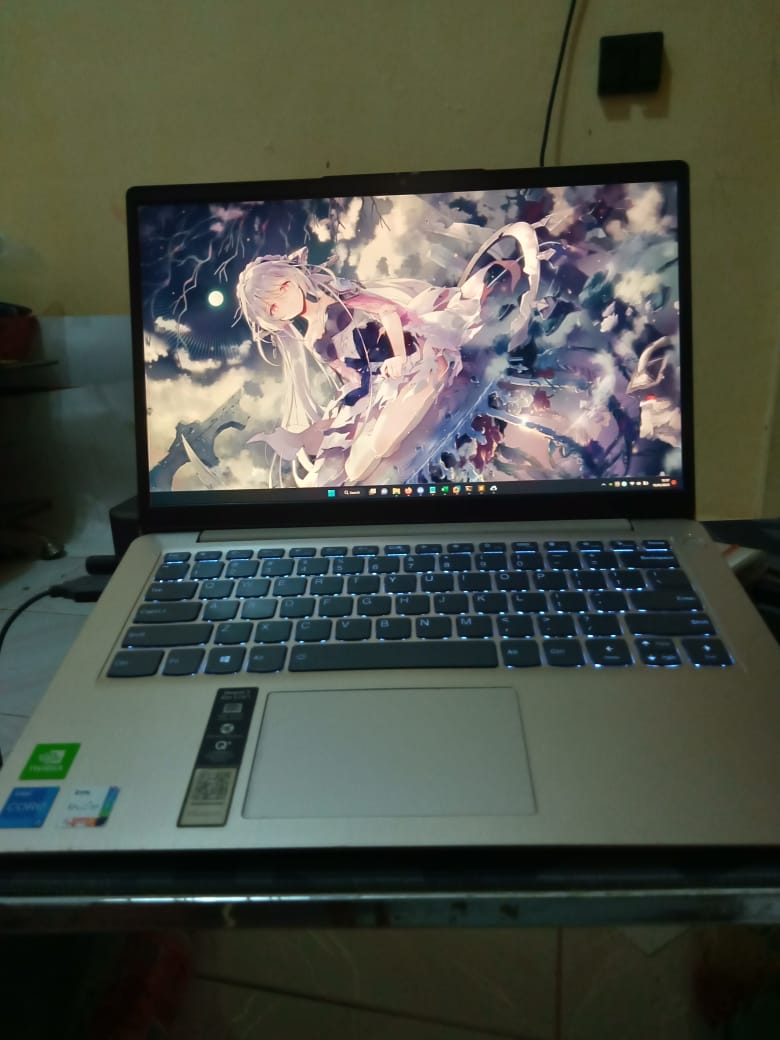Cinebench - R15 with BenchMate score 854 cb with a i5-1135G7
Thursday, 01 January 1970 07:00 | Update at null
Media Gallery
Screenshot

Device, Setup, etc



URL
https://hwbot.org/submission/4927955https://bit.ly/3c6hJVy
Information Detail
Hardware: Intel Core i5 1135G7
Specs:CPUID : 11th Gen Intel(R) Core(TM) i5-1135G7 @ 2.40GHz
Architecture : x86
Codename : Tiger Lake-U
L3 Cache : 8MB
Clock : 2.40GHz - 4.20GHz
Core/Thread : 4/8
TDP : 28W
Technology : 10nm
Socket : FCBGA1449
IGPU : Intel Iris Xe Graphics Mobile G7
See more specification...
Software: Cinebench - R15 with BenchMate
Score: 854 cb
About: Cinebench - R15 with BenchMateCinebench R15 with BenchMate is a benchmark version that combines the rendering performance of Cinebench R15 with the accuracy and measurement integrity of BenchMate, a benchmark validation tool developed specifically for overclockers and reviewers. This combination is ideal for users who want fair, consistent, and manipulation-free benchmarking results, especially when comparing performance between processors.
Like its standard version, Cinebench R15 uses the rendering engine from CINEMA 4D to test how quickly the CPU can render photorealistic 3D scenes with complex graphical elements, including over 300,000 polygons, area shadows, global illumination, and reflections. In multi-core mode, this benchmark utilizes all processor cores and threads to complete the rendering task as quickly as possible. The final score is given in points, reflecting the CPU's speed and efficiency in handling heavy workloads in parallel.
However, the main advantage of Cinebench R15 with BenchMate lies in its validation system. BenchMate ensures that the benchmark runs without any frequency manipulation, unrealistic turbo boost, or modified system latency, which could alter the final results. In other words, this benchmark is suitable for use as a transparent and reliable testing tool, whether for internal testing, content reviews, or overclocking competitions.
Additionally, BenchMate provides logging features for temperature, time, and frequency during the benchmark process, making it a comprehensive solution for measuring CPU performance with high accuracy. Therefore, Cinebench R15 with BenchMate is highly recommended for users seeking test results that are not only fast but also valid, stable, and reproducible.
The Intel Core i5-1135G7 is a quad-core mobile processor introduced in late 2020 as part of Intel’s 11th generation Tiger Lake lineup. Designed for thin and light laptops, this CPU delivers a strong balance of performance, power efficiency, and modern features, making it a popular choice for both casual users and professionals. Featuring 4 cores and 8 threads through Hyper-Threading Technology, it operates at a base clock of 2.4 GHz and can reach up to 4.2 GHz with Intel Turbo Boost, ensuring smooth multitasking and snappy responsiveness for day-to-day applications.
Built using Intel’s advanced 10nm SuperFin process, the i5-1135G7 offers improved efficiency and thermal performance over previous 14nm generations. With a configurable TDP ranging from 12W to 28W, OEMs can adjust the performance envelope depending on the device’s thermal design. The standout feature of this processor is its integrated Intel Iris Xe Graphics, equipped with 80 Execution Units and a dynamic frequency of up to 1.3 GHz. Compared to older Intel UHD Graphics, Iris Xe brings a massive leap in performance, capable of handling casual gaming, 4K video playback, and GPU-accelerated workloads like video rendering or image editing.
In benchmark tests such as Cinebench R23, the i5-1135G7 scores around 5661 points (multi-core) and 1334 points (single-core), showcasing excellent performance for a low-power chip. These scores reflect its capability to handle modern productivity software, web-based workflows, and even creative tools like Adobe Photoshop or Premiere Pro though for heavier workloads, a higher-end CPU may still be recommended.
Real-world performance testing was done on a Lenovo IdeaPad Slim 3i 14ITL6, a budget-to-midrange laptop equipped with 12GB DDR4 3200MHz dual-channel memory (8+4 configuration). This setup, combined with Windows 10 and Windows 11 22H2, allows the i5-1135G7 to fully utilize its integrated GPU and high-speed memory interface for a snappy and responsive user experience.
Whether you're a student, a professional, or a casual user looking for a capable, energy-efficient processor, the Intel Core i5-1135G7 stands out as one of the best value choices in the ultrabook category.
Hardware Detail:
Device: Lenovo IdeaPad Slim 3i 14ITL6
RAM: 12GB DDR4 3200MHz Dual Channel (8+4)
OS: Windows 10, Windows 11 22H2
* Not Avaiable
